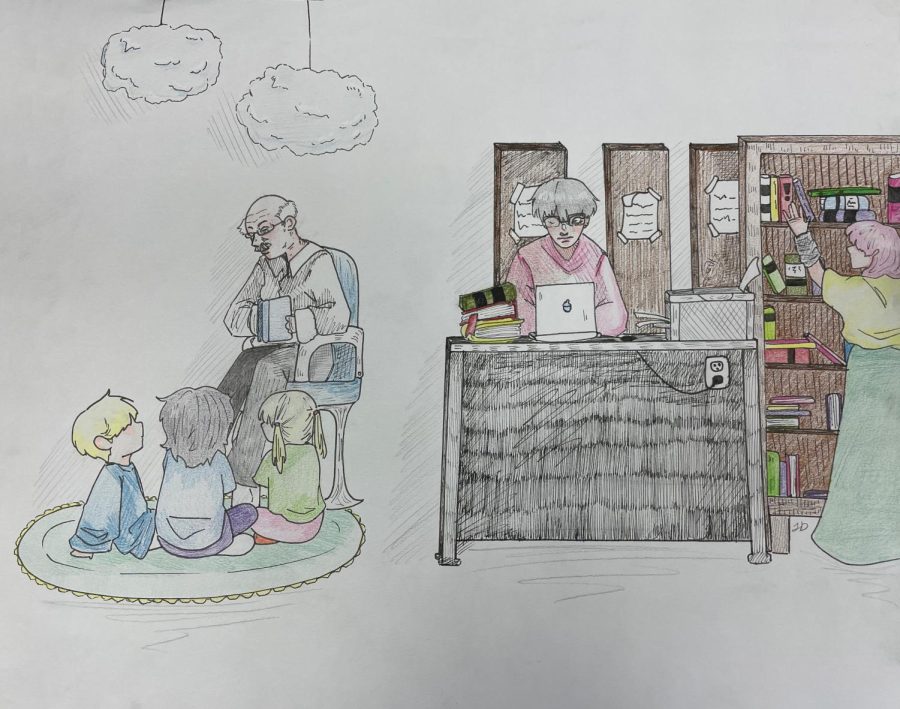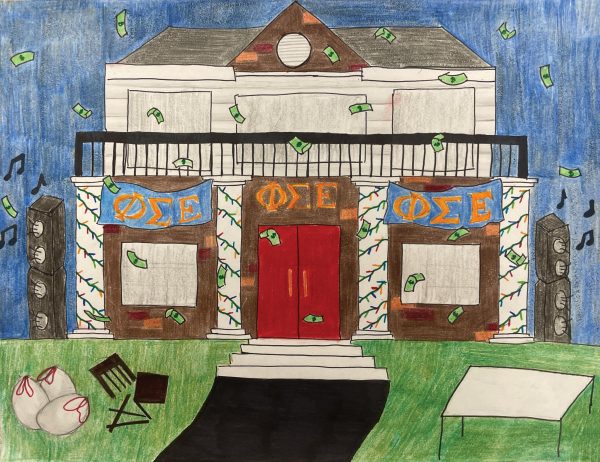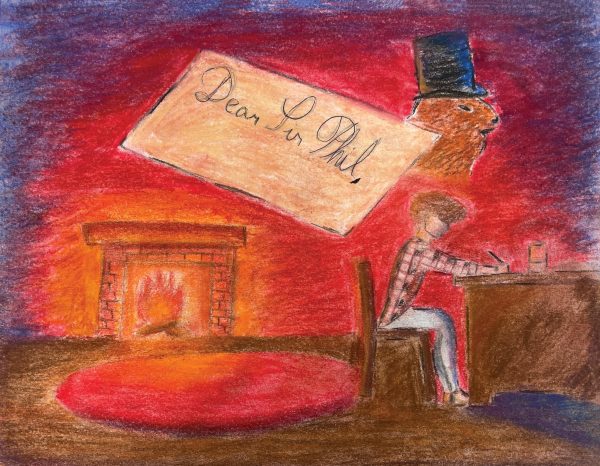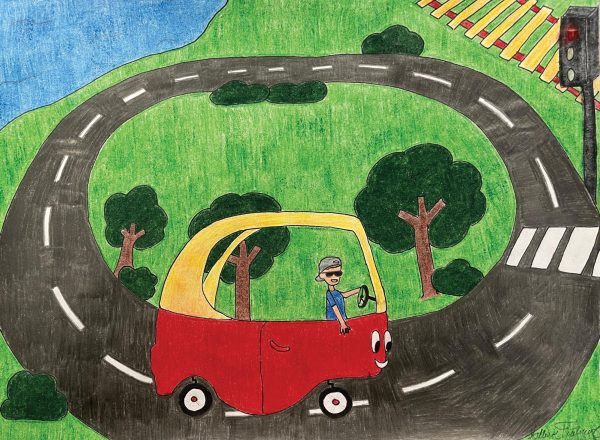Libraries facilitate community growth
By enriching communities and creating access to free education, libraries help youth grow to love reading and learning.
Showing youth how reading can enhance their lives, libraries create a space to appreciate literature, self explore and deepen understanding of the surrounding world, enabling a strong, educated community.
Moving through the technological age, many people source a majority of their consumed content from digital devices. The younger generation has less appreciation for reading and may not see the importance of a library.
Libraries are a fundamental part of communities, dating back to 7000 B.C. at The Library of Ashurbanipal in the Assyrian Empire. At the same time that people began to settle and cultivate food, they were cultivating knowledge.
However, entering this new age, many people have lost sight of how a library fits into a community.
First, public libraries are a free space where people can come together to connect.
A library often hosts town hall meetings, reading groups and even offers tech help.
A library often hosts storytimes and other book readings, generally targeted to youth.
Planting a love of learning into young souls has a major impact on society as a whole.
According to a study conducted by Hunter College sociology professor Donald Hernadez, “a student who can’t read on grade level by third grade is four times less likely to graduate by age 19 than a child who does read proficiently by that time.”
Helping young children see the value of reading will help them become productive members of society. The investment of library funds uplifts an entire community.
In the digital age, libraries have adapted to provide many services and links available online. For example, on the Indian Valley Public Library’s website (IVPL), there are links for a plethora of resources.
Some of these resources include free eBooks and research websites, a description and contact information for a variety of book clubs and organizations, a search engine for the entire library’s catalog of books and movies, an extensive listing of youth services offered by the library and many more.
Being able to access the library’s vast network of information digitally allows community members to read, watch and be informed about anything we please, wherever we may be.
While libraries may fit into our lives in a new way, they still necessitate funding for these resources. The maintenance and membership services of these resources require funding.
Whether or not you choose to utilize the library, the funding should come from the public as everyone has the opportunity to benefit from the library. The library is a resource that anyone can find benefit from.
Libraries are a source of vast information and entertainment in the form of reading material.
Those curious about a certain time period in history, or interested in reading a fiction novel of fantastical imaginings can find what they are looking for with no charge.
What makes libraries so valuable to their communities is the fact that many of their resources are entirely free to the public.
Anyone can check out a book they find intriguing, use a computer to work on assignments or print papers, utilize the quiet laid-back atmosphere to relax or build connections with other people in the library.
The importance of providing educational and social opportunities to the community should not be overlooked. Eric Klinenberg, a sociologist at New York University, coins libraries as a form of “social infrastructure” that is necessary for fighting the rising levels of poverty and inequality seen throughout the country.
Meaningful, personal connections can be made at libraries.
Local librarians can offer insight to what books are relevant. Over time, these librarians can get to know you and your book tastes, and offer specific recommendations.
These personal connections cannot be replicated online, no matter how much social media tries to emulate it.
Furthermore, libraries can offer spaces for older adults to build connections that may otherwise be hard to make after retirement.
Clubs and organizations in the library create a forum for discussion, an opportunity to keep the brain active and analytical as well as allow community members to find other people with similar interests.
Public libraries do not exist to bring in profit and therefore operate on funds provided by local governments. It is crucial to
remember all that libraries do to bolster and enrich communities so that we can continue to benefit from the services they provide.
Maintaining libraries as free resources is crucial to helping underserved groups out of generational poverty. Defunding libraries means these groups may not be able to access their potential.
Based on the American Dream, anyone should have the opportunity to establish themselves as successful and financially stable. To do so, people need to be able to access free education resources.
Almost everything in this age is barred by a price tag, but libraries are not. They break down barriers between socioeconomic classes and create a space where everyone has equal access to beneficial resources.
The IVPL also helps enrich the community beyond its doors.
They own museum passes that members 18 and older can check out. This resource is made possible by funding our libraries.
Museums and libraries are educational resources that should be accessible to people of all socioeconomic classes.
Libraries are beneficial to every single age group, making it a cornerstone of any community where one exists. The value of a library should not be overlooked by us as community members.
We should all be grateful for the existence of the Indian Valley Public Library and the plethora of resources it provides to uplift the Souderton area.








